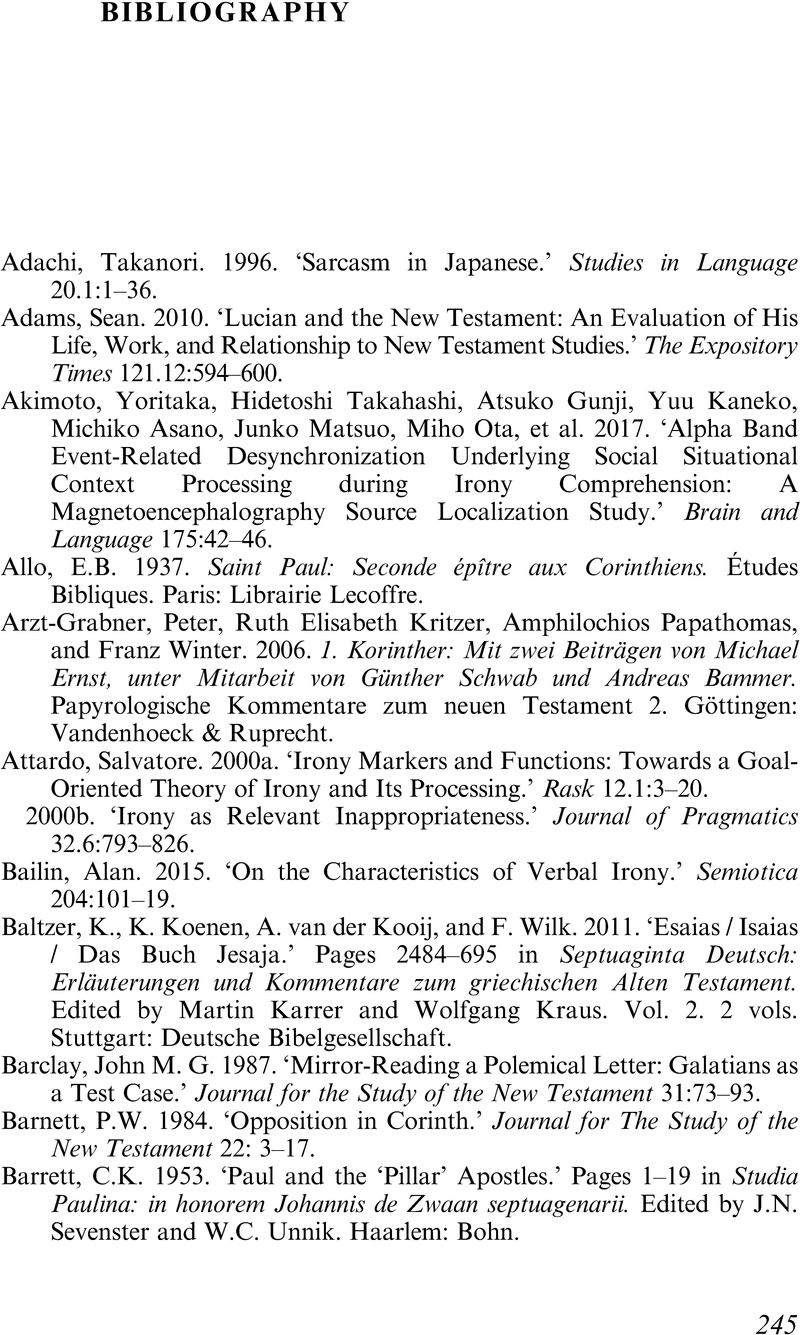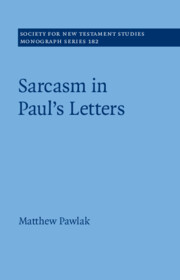Book contents
- Sarcasm in Paul’s Letters
- Society for New Testament Studies
- Sarcasm in Paul’s Letters
- Copyright page
- Dedication
- Contents
- Preface
- Abbreviations
- Acknowledgements
- Introduction
- Part I What Is Sarcasm? How Is Sarcasm Expressed? What Does Sarcasm Do?
- Part II Sarcasm in Paul’s Letters
- Book part
- Bibliography
- Index of Ancient Sources
- Index of Modern Authors
- Subject Index
- References
Bibliography
Published online by Cambridge University Press: 15 December 2022
- Sarcasm in Paul’s Letters
- Society for New Testament Studies
- Sarcasm in Paul’s Letters
- Copyright page
- Dedication
- Contents
- Preface
- Abbreviations
- Acknowledgements
- Introduction
- Part I What Is Sarcasm? How Is Sarcasm Expressed? What Does Sarcasm Do?
- Part II Sarcasm in Paul’s Letters
- Book part
- Bibliography
- Index of Ancient Sources
- Index of Modern Authors
- Subject Index
- References
Summary

- Type
- Chapter
- Information
- Sarcasm in Paul’s Letters , pp. 245 - 261Publisher: Cambridge University PressPrint publication year: 2022



